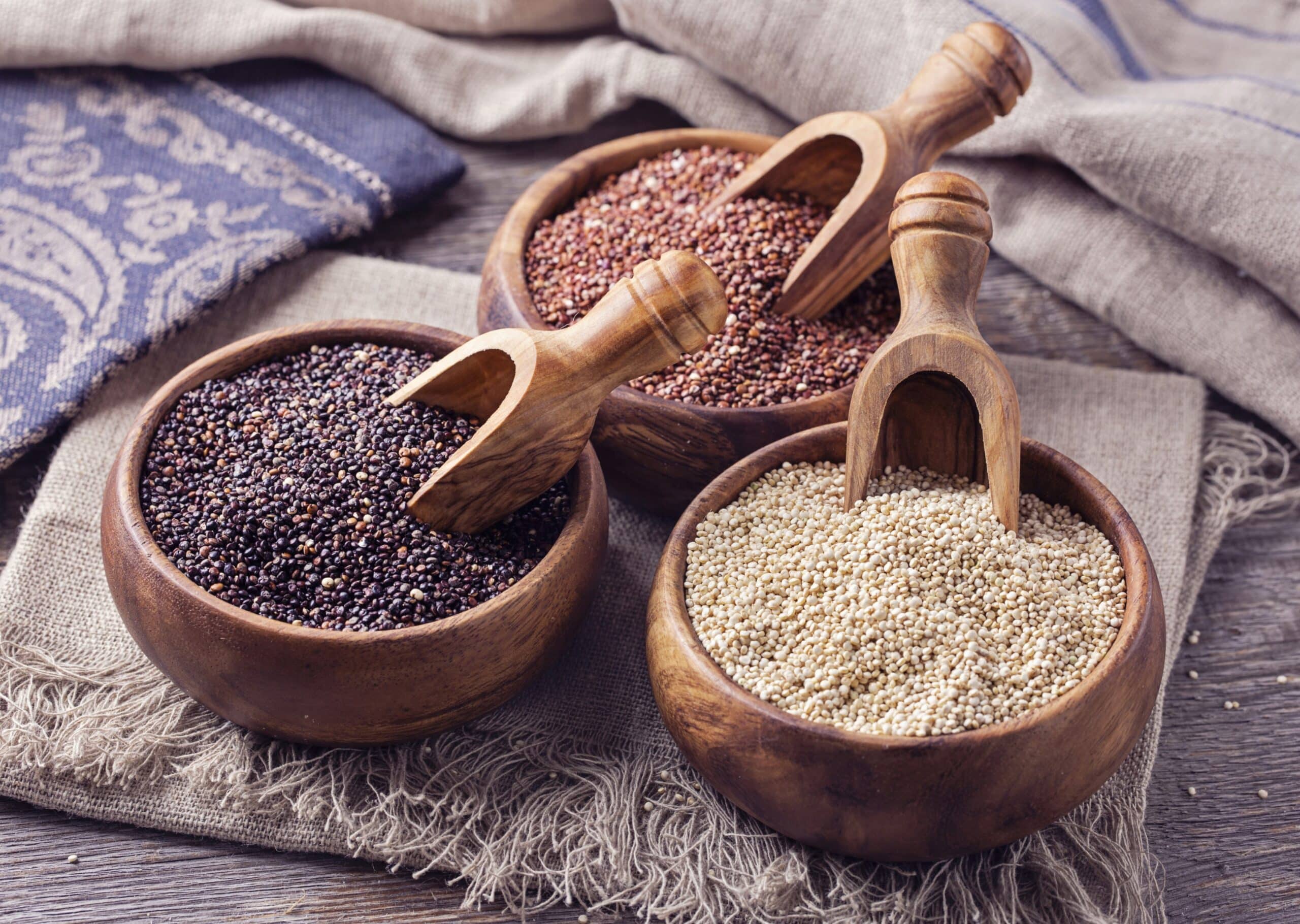Quinoa is available in a variety of choices, it can be used to make a version of a salad, served on its own, or as a side dish. This sacred grain of the Incas is a seed that is packed with health benefits that is rich in protein, may help to fight cancer, helps to maintain energy supply, assist in weight loss, may help to improve digestion, may help to regulate type 2 diabetes, and it is rich in iron that is essential for blood production.
The body needs protein for many functions from building and strengthening bones, muscles, cartilage, skin and blood to making enzymes and hormones. This tiny seed contains all 9 essential amino acids which makes it a complete protein food and excellent plant based source of protein that is higher in nutrients than most grains.
While quinoa technically is not a grain as it is classed as a pseudocereal, it is still considered to be a whole grain food. One cup of cooked quinoa contains 222 calories, 71.6% water, 21.3% carbs, 4.4% protein, 1.92% fat, 0.9 grams of sugar, and 2.8 grams of fiber. It is a great source of antioxidants and minerals, providing more magnesium, iron, fiber, and zinc than many grains. The main vitamins and minerals in quinoa are manganese, phosphorus, copper, folate, iron, zinc, and magnesium.
Quinoa is a rich source of antioxidants such as quercetin and kaempferol which have been linked to fighting against breast, bone, cervical, prostate and colon cancers. Quercetin also carries anti-inflammatory properties that can help to prevent brain disease, as well as lowering blood pressure, and it has been linked to improved exercise performance. It also contains many other plant compounds which may contribute to beneficial health effects such as saponin, squalene, phytic acid, and oxalates.
This high protein and fiber dietary choice is also loaded with magnesium to provide a three pronged attack when it comes to controlling blood sugar spikes which makes it an ideal addition to the diet of those with type 2 diabetes that may be struggling with insulin regulation. Quinoa has a relatively low glycemic index of 53, meaning it should not cause rapid blood sugar spikes. This same content can also help one to feel fuller for longer which can in turn lead to weight loss. Some of the insoluble fiber may also be fermented in the gut like soluble fibers, and feeding your gut friendly bacteria has been shown to promote better overall health.
Quinoa is a good source of vitamin B2 which is essential to breaking down protein, carbs, and fats for the body to use and convert into energy or store the energy in our muscles. However, the body is only able to store small amounts of B2 which is why it is important to consume enough foods that contain this vitamin on a daily basis.
One cup of quinoa contains about 16% of the daily recommended value of iron making it an excellent choice for those struggling to get enough of this mineral such as vegans, as iron is essential for blood production and moving oxygen from the lungs to tissues around the body.
The next time you are looking for something new, a plant based source of protein, or an alternative, why not consider quinoa, with its crunchy texture and nutty flavor. It can be used in salads, to thicken soups, eaten as a side dish, and even as a breakfast porridge. Quinoa seeds are typically pale yellow, but the color can range from pink to black, with a taste that can vary from bitter to sweet. Quinoa is typically well tolerated, having no known reported side effects.




